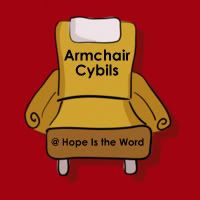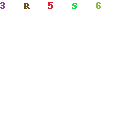It’s not that I don’t enjoy YA fantasy. In fact, it’s one of the nicest things to escape into – since it tends to be light without being sappy and gritty without being crass. Nevertheless, I don’t often venture into that world.
I’m not sure why exactly. Certainly, YA fiction is a world where you can end up with just about anything – and a lot of YA fiction IS sappy and crass. Also, fantasy and sci-fi often overlap; and while I enjoy fantasy, I am not at all fond of sci fi (notable exceptions: Hitchhiker’s Guide to the Galaxy and Ender’s War). So I don’t spend a lot of time browsing the YA section of my local library.
But when my sister-in-law was visiting over Memorial Day, she mentioned that she’d been reading and enjoying these YA fantasies – John Flanagan’s Ranger’s Apprentice. Like I do with so many things, I made a mental note of the series and promptly forgot about it entirely. Thankfully, my husband has a better memory than I and he asked me about a month later if I’d picked up that book Joanna was telling me about. Of course, by then I’d forgotten the name of the series, so I had to text Joanna for the title. I put in the request at the library and dutifully picked it up and put it in my bookpile – where it languished for months as I devoured everything pregnancy-related I could get my hands on.
But one day, I guess I’d had enough of pregnancy (actually, it probably was right around the time where I was feeling terribly one-dimensional, like all I did was talk about pregnancy and babies) and I picked up The Ruins of Gorlan.
I read it straight through and it was tremendous fun.
Five orphaned children, 15 years old and wards of the castle, prepare for choosing day – when they will offer themselves as apprentices to craftsmen and will be accepted or rejected into apprenticeships that will set them into their lives courses. Alyss, Jenny, George, and Horace know exactly to whom they wish to be apprenticed. They have already shown interest and aptitude in their desired life’s calling and some even have agreements with their chosen masters that need only to be approved by the baron.
Will, on the other hand, knows what he wants to do – but fears being able to do it. Will dreams of being a hero. He never knew his parents, doesn’t even know their names – but the note left on his basket when he was delivered to the castle in hopes that the baron would take care of him declared his father to be a hero in the last great battle against Morgarath. Will had been cherishing fantasies of his father for years – and dreamt of following in his noble father’s footsteps.
Which meant battle school, of course, and knighthood afterward. But Will is small and not particularly strong, frequently bullied by the clearly battle-school-ready Horace. Will intends to request an apprenticeship to the battle school, but fears that he will instead be rejected by all the castle masters – and end up being sent off to the fields like a common peasant.
Choosing day arrives and goes off exactly as expected. Alyss is accepted as apprentice to the diplomatic corps, Jenny to the castle’s chef. George will learn law and Horace will go to battle-school.
Will requests battle-school and is rejected. He is allowed a second choice and offers horseschool – and is rejected there as well. The mysterious ranger, who many suspect performs magic, slips a piece of paper to the Baron, informing him that there is something he should know about this Will. And the class of castle wards is dismissed. Tomorrow, the apprenticed students will report to their craftsmasters – and Will will go off to the fields.
Except for one thing – Will simply *must* see what is on that piece of paper.
In my opinion, The Ruins of Gorlan is the perfect sort of YA fantasy. It’s set in a medieval-type world with strange creatures, but seems to distance itself from actual magic – thus avoiding the deus ex machina I detest so in a fantasy tale. The protagonists experience a physical and mental coming-of-age, in which they are forced to reexamine old beliefs and establish character through fire. Both the plot and the characters are engaging. It’s just right.
Now that’s not to say that I felt the writing was particularly amazing – the occasional awkward construction and odd simile reminded me that the author is not a genius at his craft – but one can be very good without being a genius, and what Flanagan lacks in genius in writing, he makes up in skill as a storyteller. I can definitely recommend this book.
Rating: 4 stars
Category: YA fantasy
Synopsis: The orphaned Will dreams of becoming a hero like his noble father, but finds himself on a very different path than expected after he is rejected as an apprentice by his preferred craftsmaster.
Recommendation: Recommended for anyone looking for a good coming of age story or light fantasy. An engaging story well-told.


